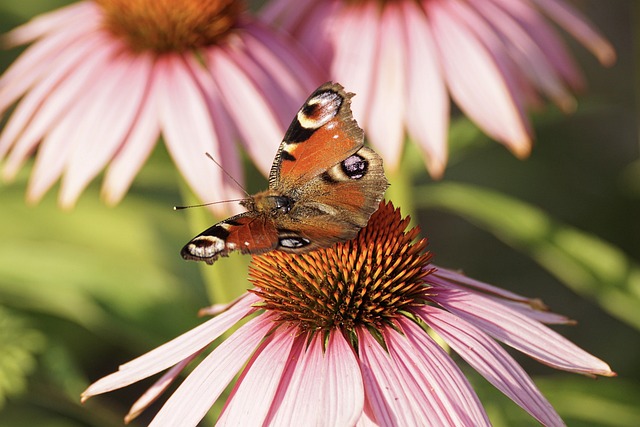Moisture is a primary driver of pest attraction, with leaks, condensation, and inadequate drainage acting as entry points for pests like termites, cockroaches, and ants. A professional pest inspection identifies these issues through advanced equipment and visual assessments, focusing on problem areas like basements, crawl spaces, and walls. By addressing moisture problems through repairs, improved ventilation, insulation, and sealing, homeowners can prevent costly pest infestations and maintain a comfortable living environment.
Moisture assessments are crucial in identifying conditions that attract pests, helping you maintain a pest-free environment. This comprehensive guide explores the link between environmental factors and infestations, emphasizing the vital role of professional pest inspections. We’ll walk you through key areas to assess during a moisture evaluation and provide solutions for mitigating moisture to prevent pest issues effectively. Discover how proactive measures can transform your living or working space into an unwelcoming haven for pests.
Understanding Moisture and Pest Attraction: The Link Between Environmental Factors and Infestations
Moisture plays a pivotal role in pest attraction, creating conditions that are ideal for various insects and rodents to thrive. Pests like termites, cockroaches, and ants are drawn to areas with high humidity, as it facilitates their survival and reproduction. A professional pest inspection often reveals that moisture issues, such as leaks, condensation, or inadequate drainage, serve as entry points and breeding grounds for these intruders.
Environmental factors, including temperature regulation and food sources, also influence pest activity. However, moisture is a fundamental element that connects these variables, making it an essential aspect to address during a comprehensive inspection. By understanding this link, professionals can effectively identify and mitigate pest-attracting conditions, providing long-lasting solutions for a pest-free environment.
The Role of Professional Pest Inspection in Identifying Moisture Issues
A professional pest inspection is an invaluable tool in identifying moisture issues that can attract pests. These specialized inspections go beyond what a typical homeowner might notice, as they are conducted by experts with extensive knowledge of pest behavior and environmental factors. During an inspection, professionals use advanced equipment to assess areas prone to moisture buildup, such as basements, crawl spaces, and walls. They also look for signs of water damage, leaks, or humidity, which can create ideal habitats for pests like termites, rodents, and insects.
By combining visual inspections with scientific tools, professional pest inspectors can pinpoint exact locations of moisture problems. This detailed information is crucial for implementing effective solutions. Homeowners may notice visible signs of water intrusion or mold growth, but a pro will uncover hidden issues that could be causing the moisture problems in the first place. Early detection through these inspections is key to preventing costly repairs and ensuring a pest-free environment.
Key Areas to Assess During a Moisture Evaluation
During a moisture assessment, several key areas must be scrutinized to identify conditions that may attract pests. One of the primary focus points is sources of water intrusion or standing water, as even small accumulations can foster breeding grounds for insects like ants, termites, and roaches. Inspect visible signs of water damage, including leaky pipes, cracks in walls, or ceilings, and mold growth—all of which indicate excessive moisture levels that pests find inviting.
Another critical aspect is evaluating ventilation and airflow, as poor circulation often leads to condensate formation, especially in dark, secluded areas. This environment is ideal for a range of pests, from termites to dust mites. Professionals recommend assessing the overall ventilation system, looking for blocked vents or inadequate exhaust fans, which can create pockets of high humidity—a perfect setting for pest activity and growth.
Implementing Solutions: Mitigating Moisture to Prevent Pest Infestations
Implementing Solutions: Mitigating Moisture to Prevent Pest Infestations
One effective strategy in pest management is addressing moisture issues within a property, as it significantly reduces conditions that attract pests. Pests like rodents, termites, and insects are drawn to areas with high humidity and standing water, making moisture assessments crucial for identifying potential entry points. By conducting a thorough professional pest inspection, experts can pinpoint sources of excess moisture, be it leaky pipes, inadequate drainage, or poor ventilation.
Once these sources are identified, implementing solutions such as repairing leaks, improving drainage systems, and enhancing ventilation becomes essential. Simple measures like ensuring proper insulation, sealing entry points, and maintaining dry areas can go a long way in deterring pests. Regular maintenance and monitoring of moisture levels are key to preventing infestations, ensuring a comfortable and pest-free living environment.
Moisture assessments, coupled with professional pest inspections, are essential tools in identifying and mitigating conditions that attract pests. By understanding the link between environmental factors and infestations, homeowners and property managers can proactively prevent pest problems. Through targeted evaluations of key areas prone to moisture issues, implementing effective solutions becomes more manageable, creating a healthier and pest-free environment. Remember, a professional pest inspection is a game-changer in navigating these challenges, ensuring a peaceful and comfortable living or working space.
